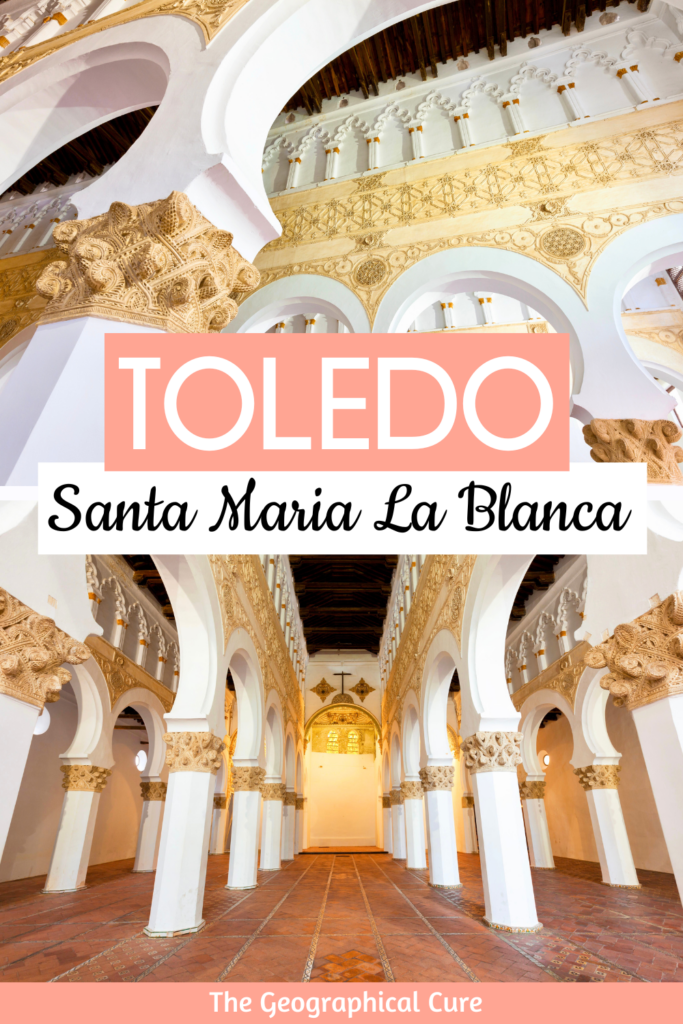Santa Maria la Blanca is a small, but oh so sweet, attraction in Toledo. It’s a former synagogue built on Christian land by Muslims, and thus utterly unique. It’s morphed from synagogue to church to tourist sanctuary.
Built in 1180, Santa Maria la Blanca is renowned as the oldest standing synagogue in Europe. It’s a stunning example of the Muslim influence on Spanish art, reflecting the multicultural nature of the ancient city.
The synagogue was built specifically for the Jewish community by Islamic architects from Andalusia. Though it’s possible that it was built by Jewish and Christian artisans who had fled further north to escape persecution.
In any event, this architectural endeavor was a rare example of harmony and collaboration between the diverse religious groups that shared the city.
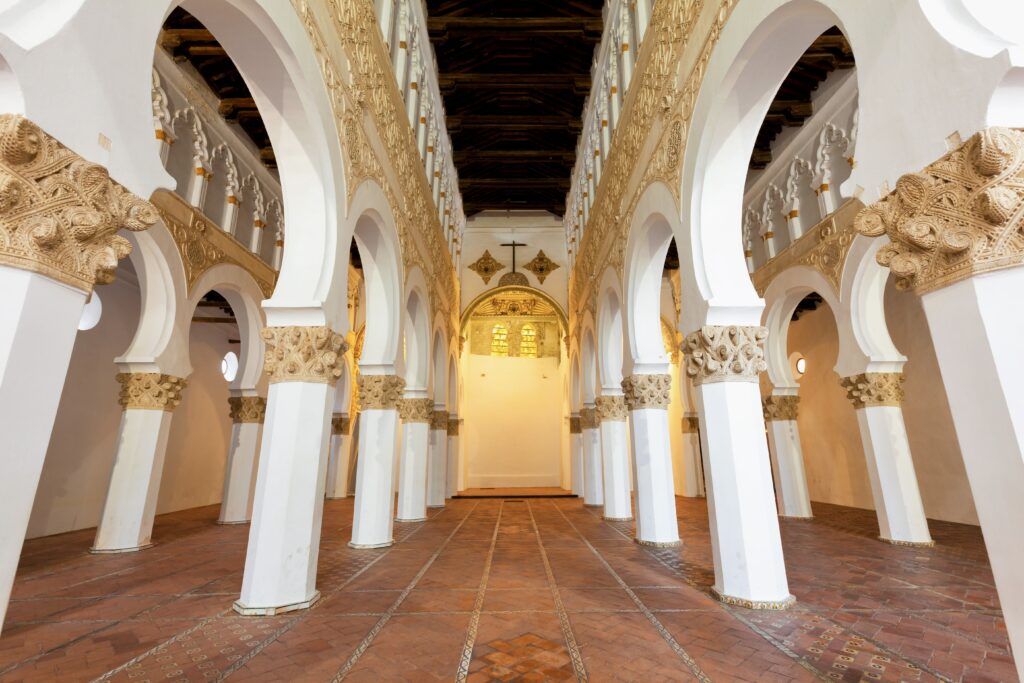
For two centuries, the synagogue, called Ibn Salomon, served as a center for Jewish worship, embedding itself deeply in the religious fabric of the community.
However, around 1405, Christians began a pogrom against Jews in Toledo. They were murdered or forced to convert to Christianity. Many synagogues were destroyed.
Fortunately, this one was saved and subsequently converted into a church, named Santa Maria la Blanca.
This transition marked a new chapter in the building’s storied history, as it moved from its origins as a Jewish place of worship to a Christian sacred site.
Today, the synagogue’s legacy continues under the stewardship of the church, which repurposed it into a museum. It’s immaculately restored and a sparkling wedding cake white.
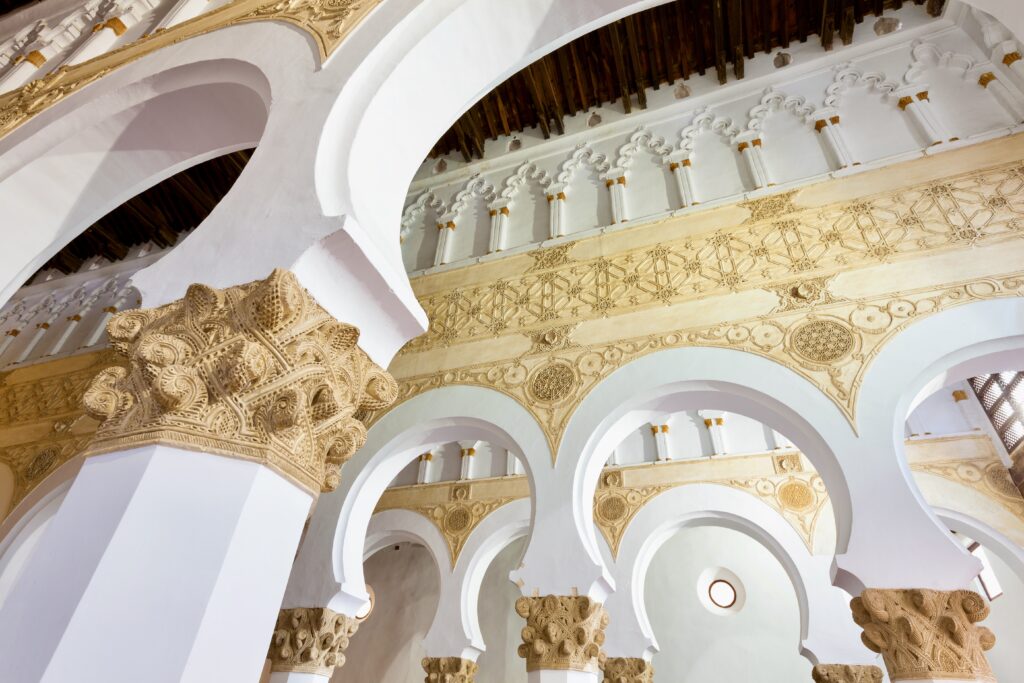
Guide To Santa Maria la Blanca: What To See
The building’s exterior is nothing to write home about. It’s very subdued and doesn’t convey the beauty within.
Once you enter the door, you’ll be dazzled by the mosque-like interior and geometric patterns and reliefs. Though relatively simple, it feels extremely spiritual.
There are five aisles divided by four arcades of 32 rhythmic horseshoe arches resting on limestone capitals.
They are of Almohad origins and reminiscent of the Mezquita in Cordoba. The Almohad was a rather belligerent tribe from Marrakech that came to power in Andalusia in the mid 12th century.
The identical capitals are hand carved and decorated with scrolls and either pineapples (a symbol of abundance) or pinecones. Both are typical Almohad designs.
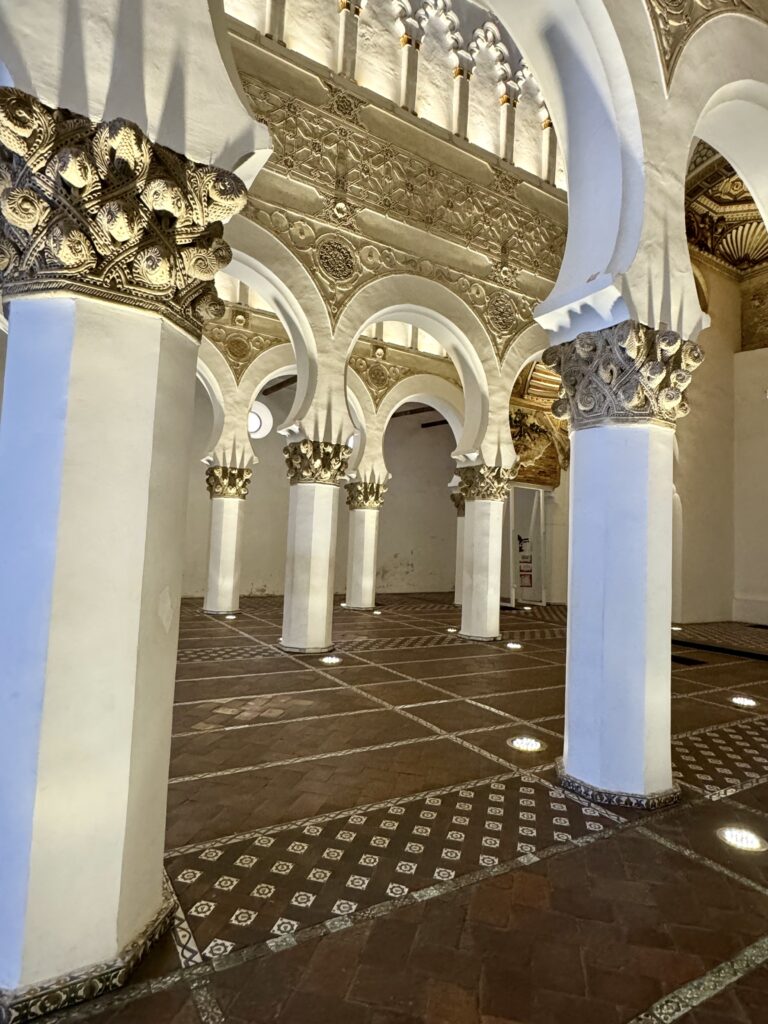
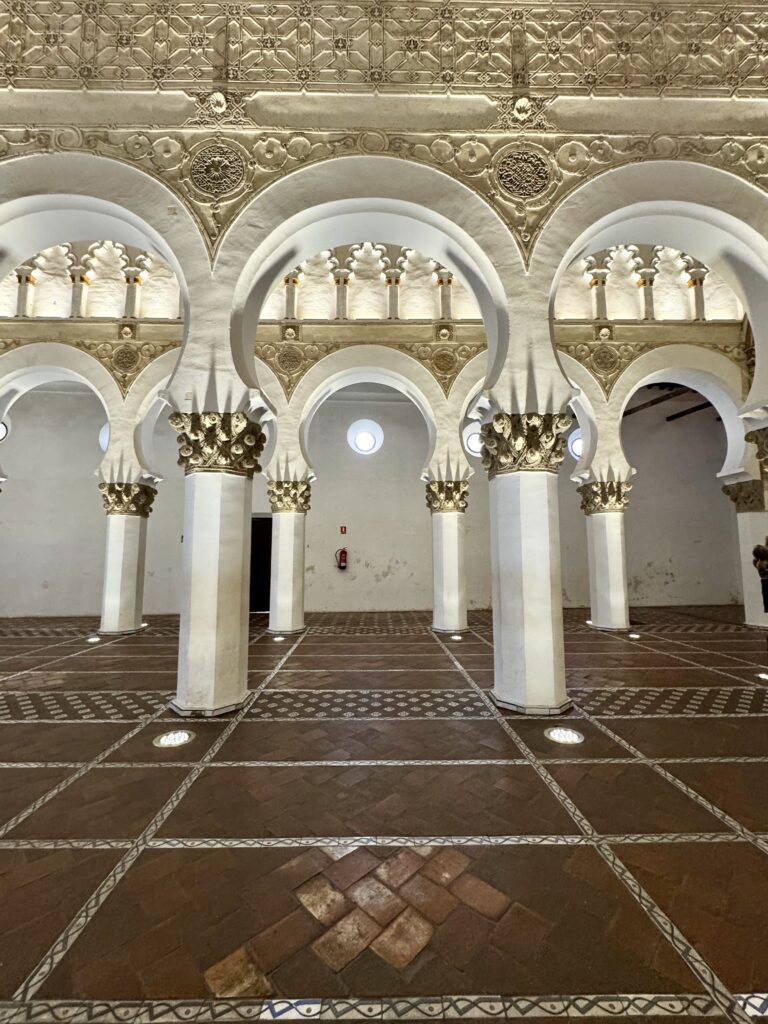
The spaces between the arches are decorated with circular medallions. Above the arches are layers of low relief stucco tendrils, roundels, and blind poly-lobed arches.
The pillars supporting them are octagonal in shape. The walls are decorated with plasterwork with foliage and geometric motifs.
The ceiling is beautiful. As in many Mudéjar structures, it’s crafted from wood, featuring intricate carpentry work known as artesonado.
Their terra cotta floor is also lovely and interspersed with more colorful Islamic tiles.
The main wall of the synagogue faces east. It’s located at the back of the church where the Torah ark was located.
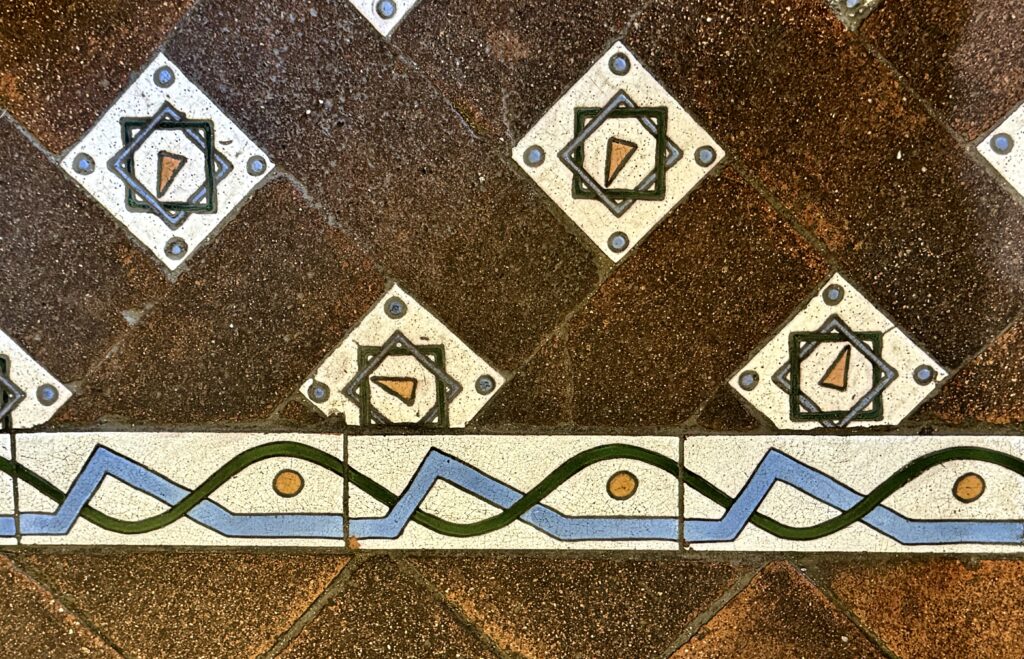
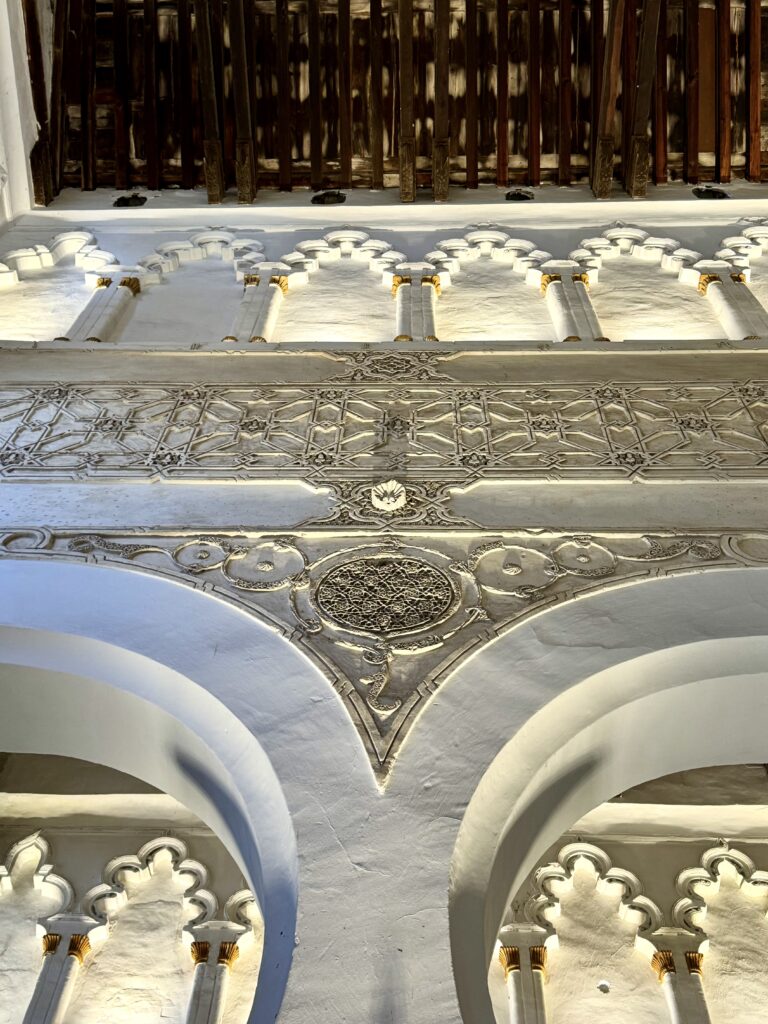
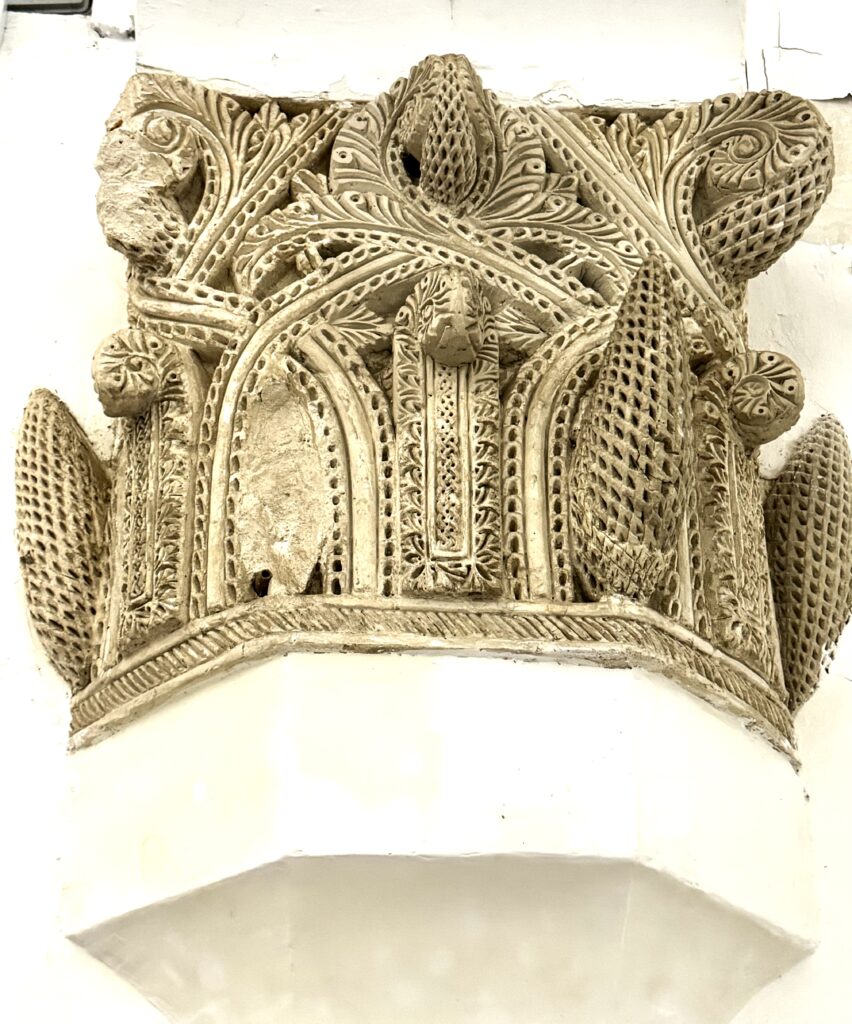
Once upon a time, there was a woman’s gallery. It’s not known precisely where it was. But archaeologists guess that it was behind the latticework truss above the entry.
Consistent with Islamic and Jewish traditions, the interior decoration avoids the use of human or animal figures, focusing instead on elegant abstract and vegetal motifs.
In the 16th century, efforts were made to give the building a more church-like appearance. Renaissance frescos were painted in the left nave and St. James scalloped shells in the lateral apses.
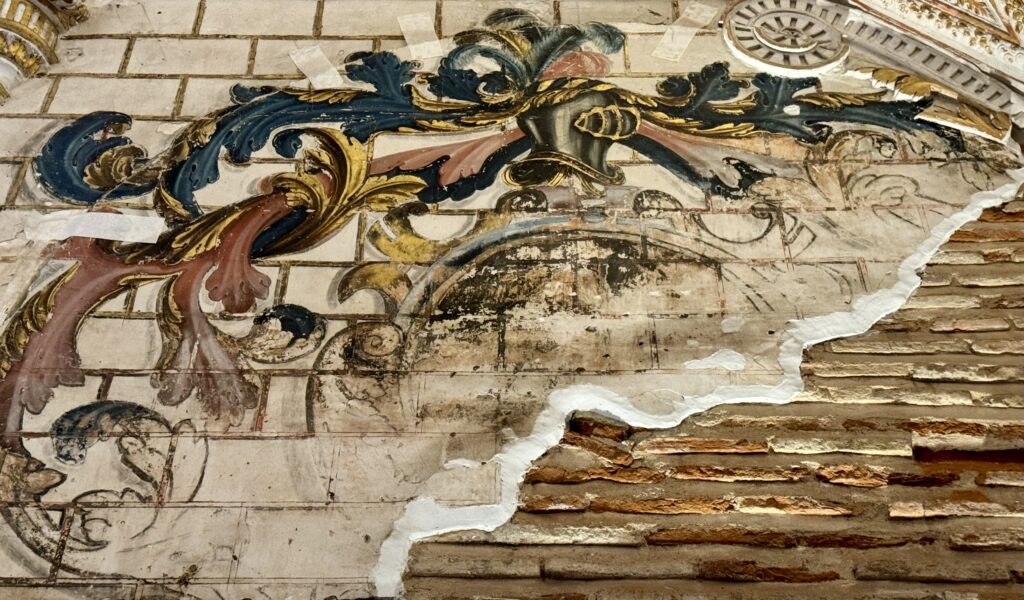
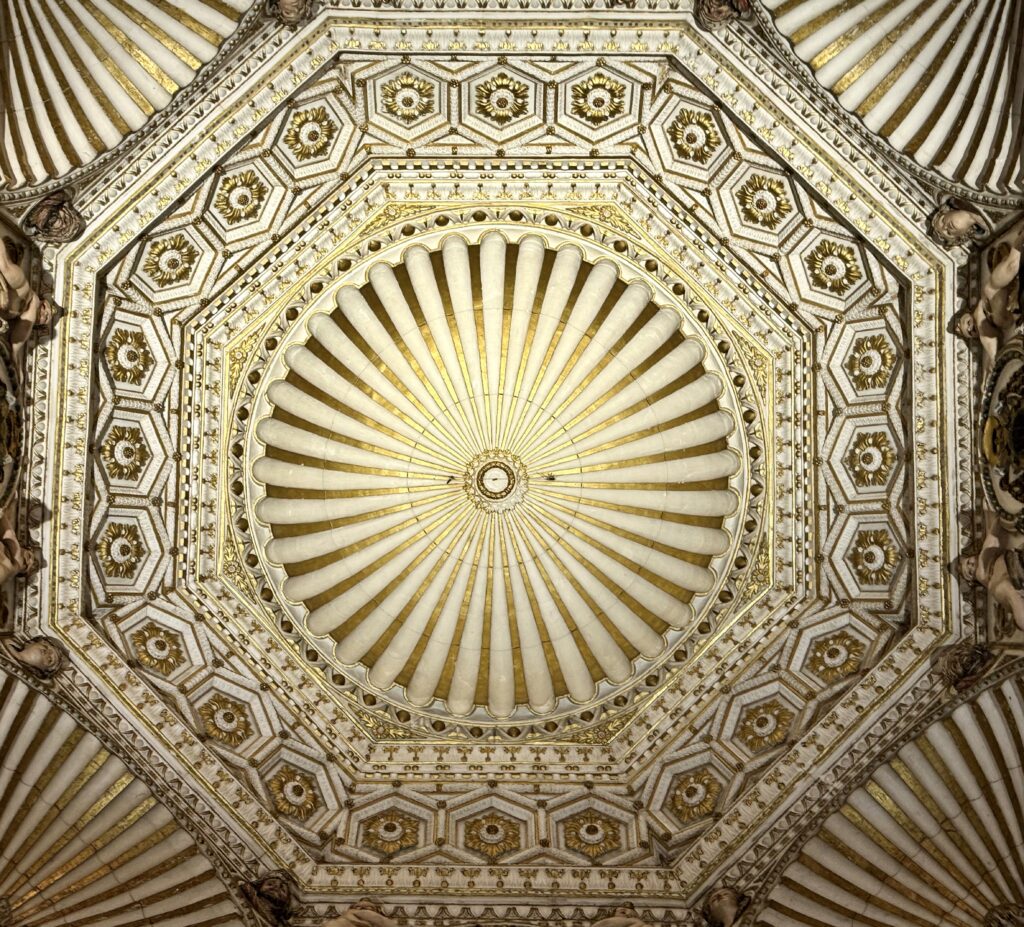
Practical Guide & Tips For Santa Maria La Blanca
Address: Calle de los Reyes 4
Hours: From March 1st to October 15th open from 10:00 am to 6:45 pm,
From October 16th to February 28th open from 10:00 am to 5:45 pm.
Tickets: 4 euros. Entry is included if you have the Toledo Wristband. You can use a credit card only if you are spending more than 5 euros.
Pro Tips: The church is very small. You could literally see it in 5 minutes. But I suggest staying longer to take in all the fine details.
Is it Worth Visiting? I definitely think so. The museum is historically important and its minimalist beauty creates an overall effect of serenity.
I hope you’ve enjoyed my guide to Santa Maria la Blanca. You may find these other Spain travel guides useful.
- 10-14 days in Spain itinerary
- 1 day itinerary for Barcelona
- 3 day itinerary for Barcelona
- 40+ Landmarks in Barcelona
- 30+ secret towns in Spain
- 10 day itinerary for Andalusia
- Most Beautiful Towns in Andalusia
- 1 day itinerary for Seville
- 3 day itinerary for Seville
- 2 day itinerary for Madrid
- 2 day Itinerary for Bilbao
Pin it for later.

